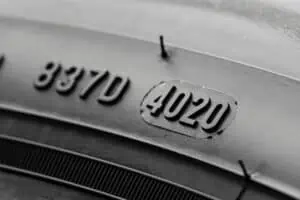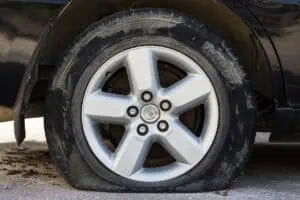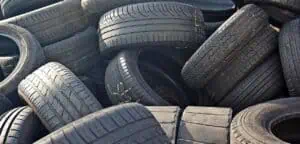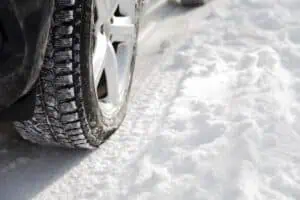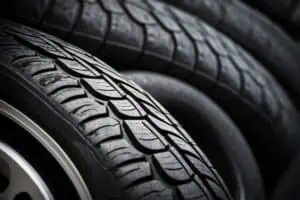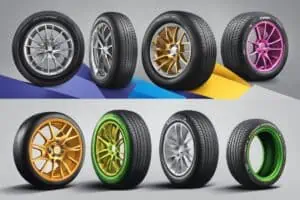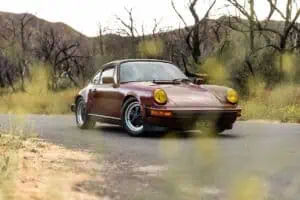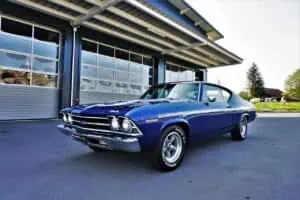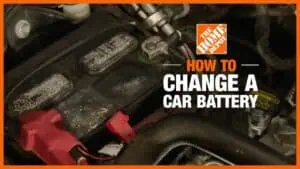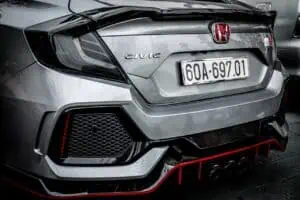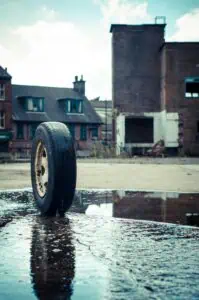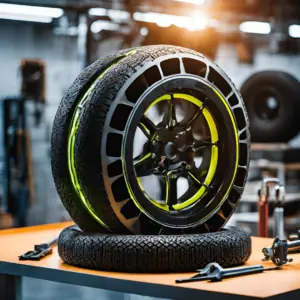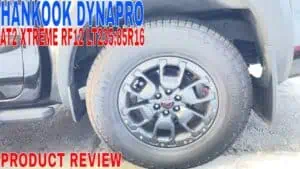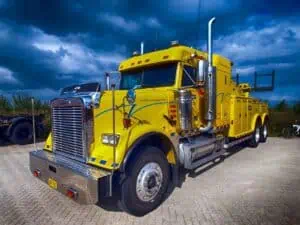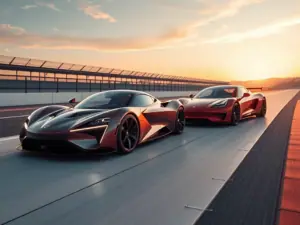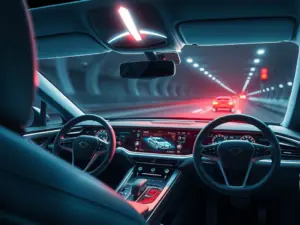Do you love monster trucks? Well close your eyes because now you’re suddenly at a monster truck rally, the crowd’s roaring, and bam, this behemoth of a machine rolls out. The first thing that catches your eye? Those massive tires!
We’re talking about rubber giants that stand taller than most adults. No kidding – these bad boys typically measure a whopping 66 inches tall and 43 inches wide. To put that in perspective, imagine two tall friends standing on each other’s shoulders – that’s about the height of one of these tires!
Now, you might be thinking, “Where on earth do they get tires that big?” Well, here’s the kicker – these aren’t your average off-the-shelf rubber. Monster truck tires are often custom-made beasts, derived from agricultural equipment tires and modified to handle the extreme abuse of monster truck competitions. It’s like taking a tractor tire and giving it superpowers!
Let’s talk weight for a second. You know how you feel after a big holiday dinner? Well, multiply that by about a thousand, and you’re getting close to the weight of a single monster truck tire. Without the rim, one of these tires tips the scales at a staggering 800-900 pounds. That’s right – each tire weighs about as much as a full-grown male grizzly bear!
And if you think your car tires are expensive, hold onto your wallet. A single monster truck tire can set you back anywhere from $2,500 to $7,500. Ouch! With teams potentially going through up to eight tires a year, that’s a tire budget bigger than some people’s annual salary!
But who’s crazy enough to make these rubber monsters? Well, there are a few big names in the game. BKT has been the official tire supplier for Monster Jam trucks since 2014, constantly pushing the envelope to improve durability and performance. Then there’s Firestone, a long-time player known for their thicker cut tires that grip like nobody’s business. They’ve been keeping the famous Bigfoot truck rolling for years. And let’s not forget Goodyear, who’ve been in the monster tire game so long they practically wrote the rulebook.
Here’s a fun fact that’ll blow your mind: monster trucks can’t even fit into their transport trailers with their big tires on! The crews have to swap them out for smaller tires (still huge by normal standards) just to load them up. It’s like watching Cinderella’s pumpkin turn back into a regular pumpkin, only in reverse when they get to the show!
One of the coolest things about monster truck tires is how teams customize them. They actually cut and modify the tread patterns to suit different driving styles and conditions. It’s like giving your tire a haircut, but instead of looking good for a date, it’s about crushing cars and doing backflips!
Several brands are popular in the monster truck world:
- BKT: Since 2014, BKT has been the official tire supplier for Monster Jam trucks. They’ve worked hard to improve their tires’ durability and performance over the years.
- Firestone: A long-standing name in monster truck tires, Firestone is known for its thicker cut tires that provide excellent grip. They’ve been a longtime sponsor of the famous Bigfoot truck.
- Goodyear: Another pioneer in the monster truck tire industry, Goodyear set many of the standards for other brands to follow.
- Ukraine Tires: Before the switch to BKT, many Monster Jam trucks used Ukraine Tires. These tires are known for their durability and ability to withstand significant abuse.
Find out more about monster trucks here at monstertruck.fandom.com
A typical life span of a monster truck would be about 5-8 shows but that’s just because of the amount of abuse they’ve been put through. If by any slight chance you do have monster truck tires and want to save your tires (and then later destroying them) here’s some tips:
- Regular Inspection: Check for cuts, bulges, or unusual wear patterns before and after each event.
- Proper Inflation: Maintain the correct air pressure. Under-inflation can cause excessive heat buildup and potential failure.
- Rotation: Rotate the tires regularly to ensure even wear, just like you would with regular vehicle tires.
- Cleaning: Clean the tires after each event to remove dirt and debris that could cause damage over time.
- Storage: Store tires in a cool, dry place away from direct sunlight and ozone sources to prevent premature aging.
- Balancing: While not as critical as with highway tires, proper balancing can help extend the life of monster truck tires.
- Replacement: Don’t push tires beyond their limits. Replace them when signs of excessive wear or damage appear.
After watching these incredible machines defy gravity and crush everything in their path, take a moment to appreciate those massive tires. They’re not just big and loud – they’re marvels of engineering that make all those “oohs” and “aahs” possible. Who knew tires could be so exciting, right?
Ever wondered how these mechanical beasts manage to land safely after pulling off jaw-dropping flips? Let’s break it down.
At the heart of a monster truck’s ability to stick the landing is its robust design. These aren’t your average pickup trucks on steroids – they’re purpose-built machines engineered to take a beating. The chassis is typically a custom-built tubular frame, crafted from high-strength steel that can flex and absorb impact without breaking. This flexibility is crucial, acting like a giant spring to dissipate the enormous forces generated during landings.
Suspension is where the real magic happens. Monster trucks sport massive shock absorbers – we’re talking shocks that are often taller than an average person! These aren’t just for show; they’re sophisticated pieces of engineering, usually filled with nitrogen and oil, capable of absorbing the equivalent of several tons of force. When a truck comes down from a flip, these shocks compress, soaking up the impact like a champ and preventing the force from being transferred to the driver or the truck’s structure.
Those massive tires aren’t just for crushing cars – they play a vital role in landings too. These tires act as additional shock absorbers. Their large surface area helps distribute the landing force over a wider space, reducing the impact on any single point of the truck.
But all this engineering wizardry would be for naught without a skilled driver at the helm. Monster truck drivers are part daredevil, part physicist, constantly calculating angles and momentum in real-time. As they launch into a flip, they’re already planning their landing. Using the truck’s throttle, brakes, and steering, drivers can actually control the truck’s rotation in mid-air – a technique known as “air control.”
The key to a successful landing lies in timing and angle. Drivers aim to land on all four wheels simultaneously or slightly rear-wheels first. This spreads the impact evenly and allows the suspension to do its job effectively. If they’re coming in nose-heavy, they might gun the throttle to bring the rear end down faster. Conversely, if they’re tail-heavy, they might tap the brakes to level out.
One of the most crucial techniques in a driver’s arsenal is the “slap wheelie.” As the truck begins to land, the driver will hit the gas, causing the front end to lift slightly. This transfers more of the landing force to the rear of the truck, where the sturdiest part of the chassis and the strongest shocks are located. It’s a split-second decision that can mean the difference between a smooth landing and a potential rollover.
So, the next time you see a monster truck soaring through the air, remember – it’s not just a wild stunt. It’s a carefully choreographed dance between cutting-edge engineering, physics, and human skill. These trucks might look like they’re defying the laws of nature, but in reality, they’re working with them in the most spectacular way possible!
Also here’s a quick monster truck show before you go on your way–just for fun!
